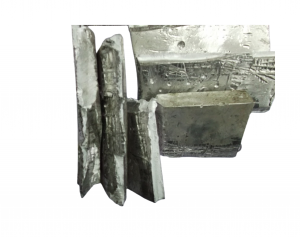【Product Application】Application of Aluminum-Scandium Alloy
Aluminum-scandium alloy is a high-performance aluminum alloy. Adding a small amount of scandium to the aluminum alloy can promote grain refinement and increase the recrystallization temperature by 250℃~280℃. It is a powerful grain refiner and effective recrystallization inhibitor for aluminum alloys, which has a significant impact on the structure and properties of the alloy, greatly improving its strength, hardness, welding performance, and corrosion resistance. Scandium has a good dispersion strengthening effect on aluminum, and maintains a stable non-recrystallized structure in the state of hot processing or annealing. Some alloys are cold-rolled thin plates with large deformation, and they still maintain this structure even after annealing. The inhibitory effect of scandium on recrystallization can eliminate the recrystallized structure in the heat-affected zone of the weld, and the subgrained structure of the matrix can directly transition to the cast structure of the weld, so that the welded joints of the scandium-containing aluminum alloy have high strength and corrosion resistance. The improvement of the corrosion resistance of aluminum alloys by scandium is also due to the refinement of grains and the inhibition of the recrystallization process by scandium. Adding scandium can also make aluminum alloy have good superplasticity. After superplastic treatment, the elongation of aluminum alloy with about 0.5% scandium can reach 1100%. Therefore, aluminum-scandium alloy is expected to become a new generation of lightweight structural materials for aerospace, aviation, and shipbuilding industries. Russia has developed more than 10 grades of aluminum alloy containing scandium, which are mainly used for welding load-bearing structural parts in aerospace, aviation, and ships, as well as aluminum alloy pipes for alkaline corrosive media environments, railway oil tanks, and key structural parts of high-speed trains.

Scandium-containing aluminum alloys have broad application prospects in high-tech sectors such as shipbuilding, aerospace industry, rockets and missiles, and nuclear energy. By adding trace amounts of scandium, it is hoped that a series of new-generation high-performance aluminum alloy materials such as ultra-high-strength and high-toughness aluminum alloys, high-strength corrosion-resistant aluminum alloys, and high-strength aluminum alloys for neutron radiation resistance will be developed on the basis of existing aluminum alloys. These alloys will have very attractive application prospects in the aerospace, nuclear energy, and shipbuilding industries due to their excellent comprehensive properties. They can also be used in light vehicles and high-speed trains. Therefore, scandium-containing aluminum alloys have become another eye-catching and most competitive high-performance aluminum alloy structural material after AlLi alloys. my country is rich in scandium resources, and has a certain foundation for the research and industrial production of scandium. China is still the main exporter of scandium oxide. The research on AlSc alloys is of epoch-making significance for the development of aluminum alloy materials for my country’s high-tech and national defense construction. It can also give full play to my country’s scandium resource advantages and promote the development of my country’s scandium industry and national economy.
For more information about Aluminum-Scandium Alloy welcome to contact us
Tel&whats:00861352431522
Email:sales@shxlchem.com